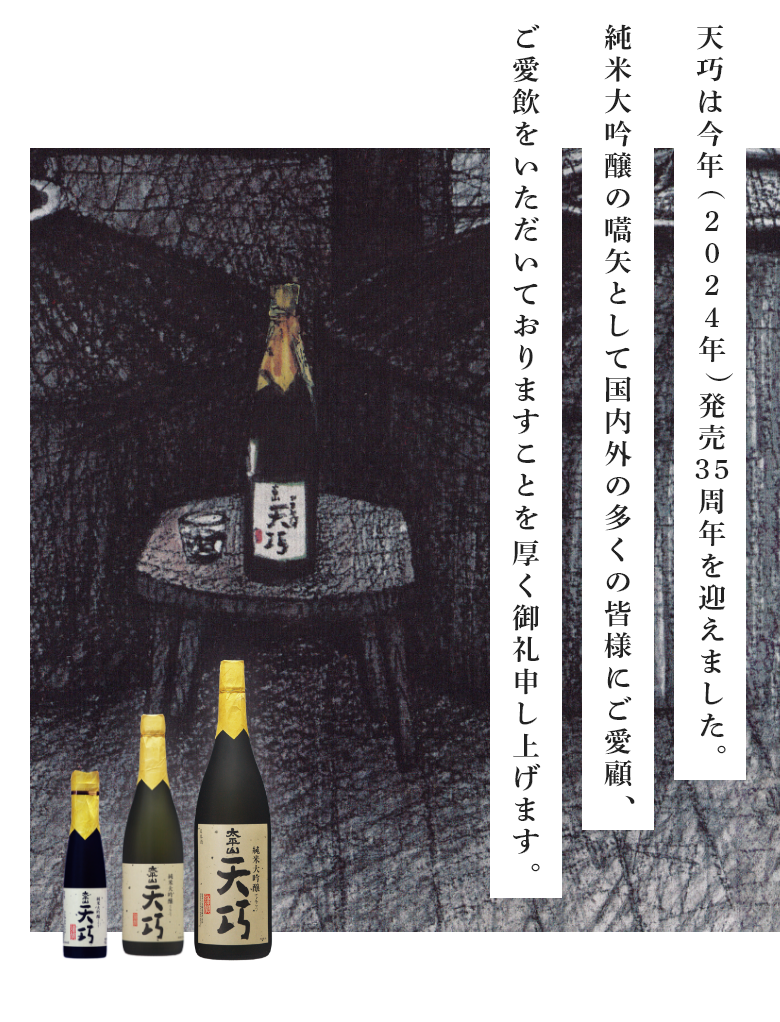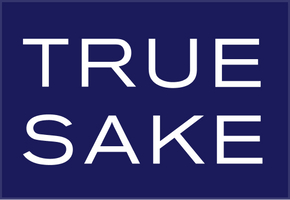
Sake Landmarks – When A Special Sake Turns 35 Years-Old (Tenko 40)
For me the sake industry is a moving record of time, which is another word for sake history. This is something I have been privy to witness first hand. My experience in the history of sake has been miniscule and very brief, but it has made up a very large portion of my life, so certain benchmarks and landmarks make me shake my head and say, “Wow that’s a long time.” And so when I found out that a certain sake that means a great deal to me turned 35 years old, it made me say just that, “Wow, Tenko is 35 years old, dang!”
I have had an excellent relationship with a stellar sake brewery in Akita Prefecture called Kodama Jozo, makers of Taiheizan and Tenko sake brands and lots of other fermented goodies like miso and soy sauce. They are fermenting geniuses, and the husband and wife team Shin and Eiko Kodama are like family to me and to all of our True Sake family. (Yes, they would welcome you to their brewery and art gallery gladly, as they totally personify a new type of internationally focused brewery that greatly enjoys educating and supporting the overseas market.)

We have sold Taiheizan and Tenko products for about two decades, and I use Tenko 40 as one of my True Sake selling brews to represent what balanced and umami driven Daiginjo sake from the Tohoku region tastes like. In a word, it sells itself. And ironically I only find out its awards and accolades well after the fact. It’s like having an outstanding friend who doesn’t brag about or discuss himself/herself, but you hear the most amazing things about them.
I recently received a newsletter email from the brewery that announced the 35th Anniversary of Tenko and felt like starting off the New Year with a wink and nod to two of the really good people in sake, two of the nicest people that I know, and two of the most important people that I know for the betterment of international sake and their “child” Tenko 40. (I have been watching Shin practice his English for 20 years, but I think Eiko wrote most of this, so please enjoy and visit their website to learn more about this superb brewery – link at the end of the article.)
Tenko
Launching of Tenko
Tenko premiered in November 1989. The original Tenko was released after a year of maturation from BY1988. It was sold as a special sake for the year-end gift season and the new year celebration. In those years, production of Junmai Daiginjo was still very limited, amounting to only 1% of the total sake production in Japan. However, the new era of Junmai Daiginjo arrived soon after as consumers thirsted for higher quality, hand-crafted sake. Tenko was one of the pioneers leading this rapid growing market of Junmai Daiginjo.
Starting with 1.8L bottles
First Tenko was in 1.8L bottles in the original wooden gift box. This was unique and it soon became very popular as gift sake for its quality and design. We first used cedar trees for these gift boxes rather than paulownia wood, but cedar tree wood crafts were vulnerable to humidity, and we eventually changed gift boxes to paper. We are still using the same designed paper box today.
What does Tenko mean?
Tenko 天巧 uses two Chinese characters which mean “divine craftsmanship by nature”.
Tenko is made 100% with pure natural ingredients (rice, rice koji and water) and multi-parallel fermentation. To make this super premium sake is the work of natural yeasts in the ideal environment made by kurabito.
“Heavenly Grace” became an English name for the Tenko series by Beau Timken, a Sake Samurai and the founder of True Sake in San Francisco.

Evolution of Tenko over the 35 years:
Transformation
From the very beginning, Tenko was a Junmai Daiginjo using 100% Yamada Nishiki sake rice with a polishing ratio of 40%. As for yeasts, we initially used No.9 Kyokai (Brewing Society) yeast. Then later, we changed the yeast to AK-1 when it was released and proved to be more aromatic, ideal for Daiginjo sake. Later, we changed the yeast again to M310 when it was isolated and we found it to be superior to AK-1 in aroma and complexity. In order to off-set and settle the overpowering aroma, we brew two types of sake in separate tanks, one by Sokujo method and another by Kaden Kimoto method which has bolder characteristics of Kimoto sake. After filtration, we store them in a cool environment to settle and mature, and then blend these two to create balance and well-roundedness.
Later, we released Tenko 720ml bottles as requested by market demands. Tenko 720ml soon became popular and expanded market possibilities.
Transformation 2
Just until fairly recently, it was common to store sake in tanks, and Tenko was no exception. As Tenko became an award winning brand and available all-season, we began to store Tenko to preserve its aroma and complex texture. This is done manually and it requires more work but at this point, we find this the best way to preserve the unique characteristics and quality of Junmai Daiginjo. We apply flash pasteurization to keep its freshness.
We are keeping the basic concept of Tenko, but we intend to move forward bringing in modern technology and innovations to meet the evolving market needs.

History of Awards:
Monde Selection - Gold 11 times Grand Gold 7 times
US National Sake Appraisal - Gold 2001~2012, 2020~2021 Grand Prize 2017
IWC - Trophy 2009, Gold 2017, 2018
Sake Competition - Gold (ranked 2nd place of all entries) 2024
Kura Master - Platinum 2024
Profile:
Rice: Yamada Nishiki
Polishing ratio: 40%
Yeast: M310
Alcohol volume: 16%
Sake Meter Value: +2
Acidity: 1.5
Available bottle sizes: 720ml
地域とともに醸し続けて140年
Brewing local for 140 years
Awards in 2024
2024 Kura Master - Platinum
2024 Sake Competition Tokyo - Gold
2024 International Wine Challenge (IWC) - Silver
If you have never tried Tenko 40 or any other of the Kodama’s sakes then we strongly encourage you to make 2025 the year to taste the essence of a sake that was produced in Akita Prefecture in a brewery that specializes in fermentation and passion.
